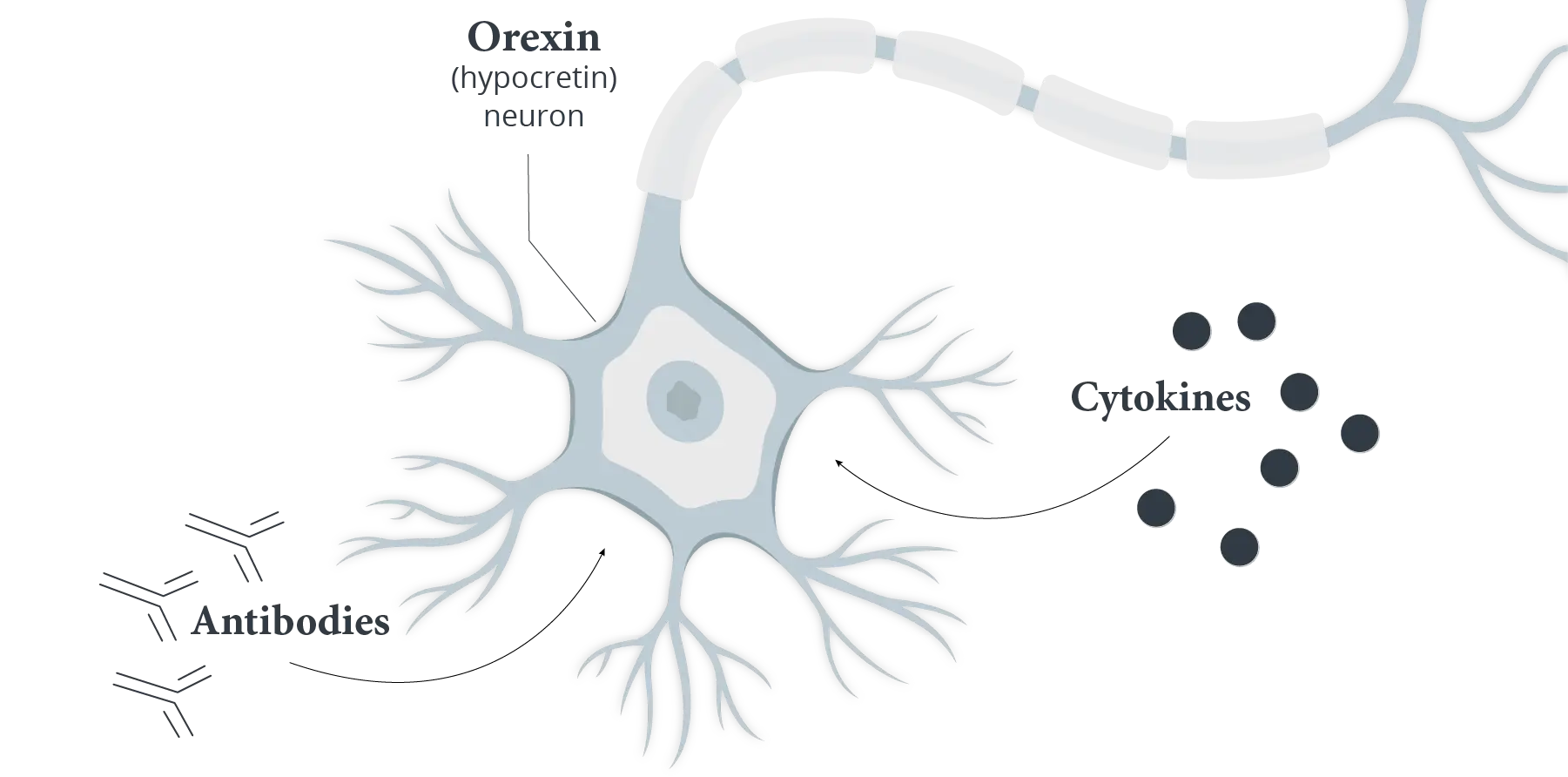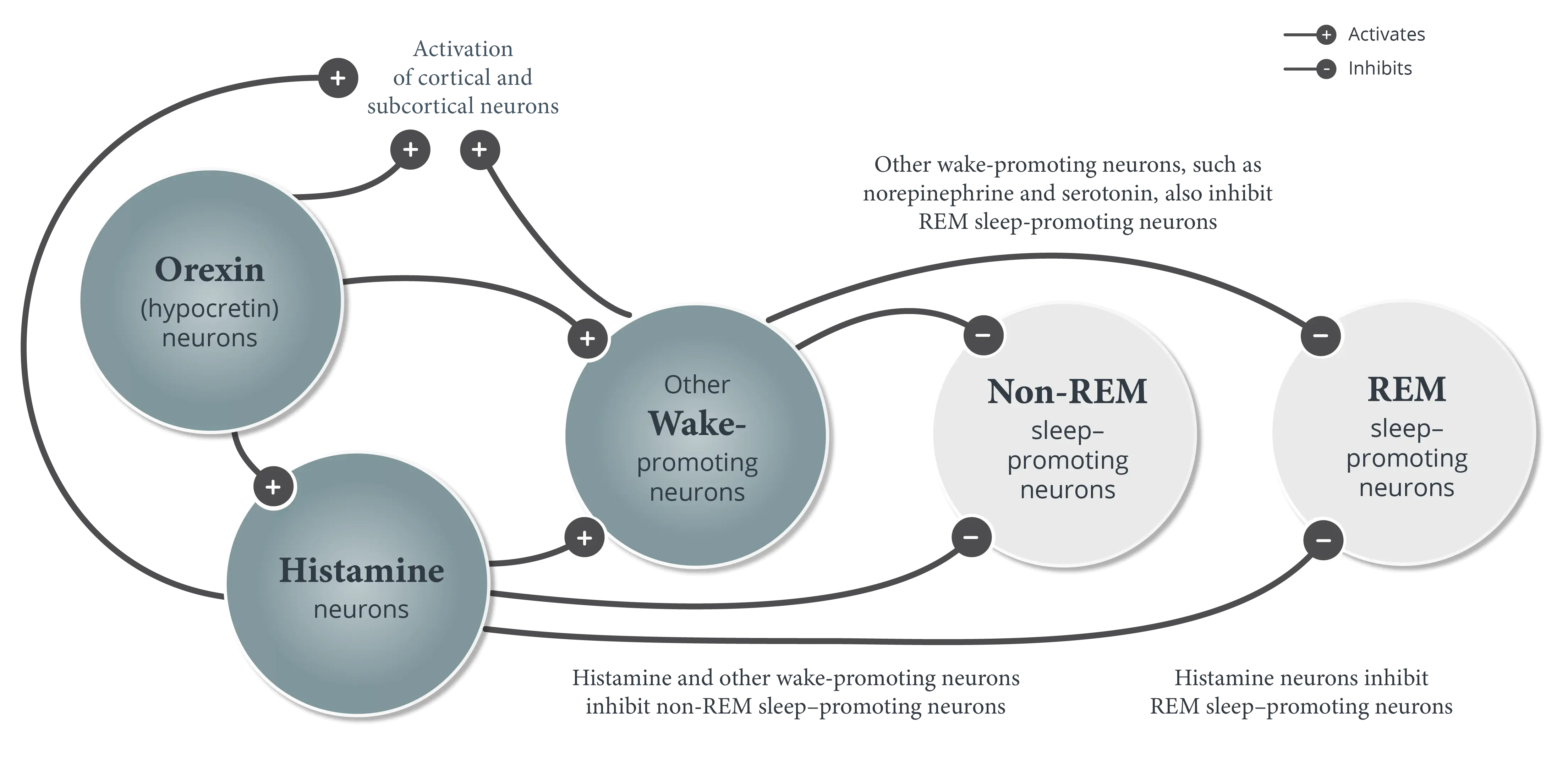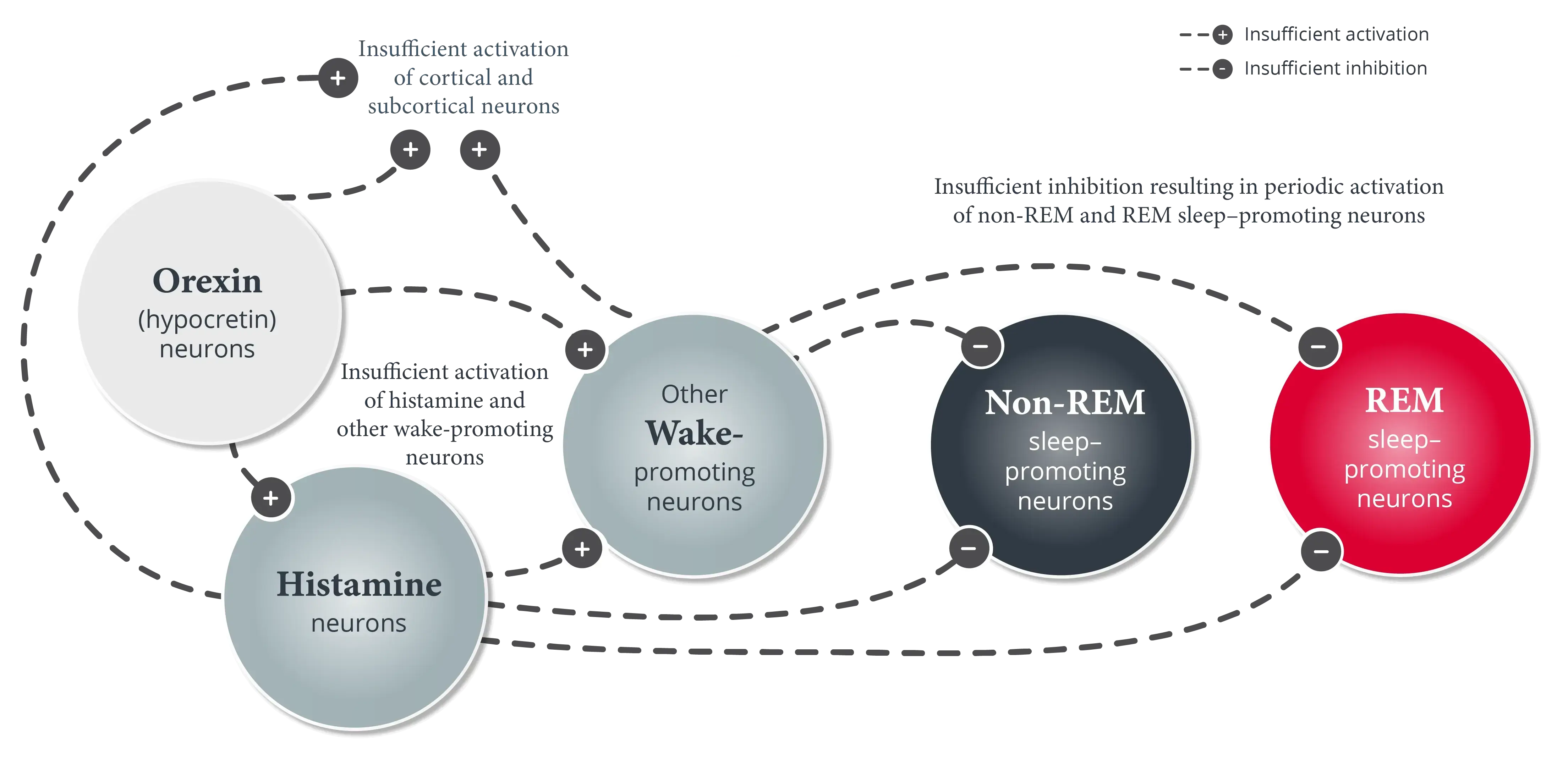

Epidemiology and Etiology of Narcolepsy in Pediatric Patients
This content was developed using the International Classification of Sleep Disorders, third edition, text revision (ICSD-3-TR) and other materials.
Epidemiology and Etiology of Narcolepsy in Pediatric Patients
This content was developed using the International Classification of Sleep Disorders, third edition, text revision (ICSD-3-TR) and other materials.
Overview
Narcolepsy type 1 is usually caused by selective loss of orexin (hypocretin) neurons; the cause of narcolepsy type 2 is likely heterogeneous.1
The epidemiology of narcolepsy in the pediatric population is unclear; however, it has been estimated that approximately 4,000 pediatric patients (<18 years) in the United States have been diagnosed with narcolepsy.2
Most patients with narcolepsy have low levels of cerebrospinal fluid (CSF) hypocretin (also known as orexin).1
Narcolepsy type 1 (narcolepsy with cataplexy) is usually caused by the selective loss of orexin (hypocretin) neurons in the hypothalamus, most likely due to an autoimmune response in genetically predisposed people.1,3,4 Patients generally have low or undetectable concentrations of CSF hypocretin (orexin).1
The underlying cause of narcolepsy type 2 (narcolepsy without cataplexy) is likely heterogeneous. A small portion of patients with narcolepsy type 2 have low or intermediate levels of CSF hypocretin, although it is rarely measured and therefore often not known.1


Genetic factors play a key role in the development of narcolepsy.3 Over 98% of patients with narcolepsy have the human leukocyte antigen (HLA) gene variant HLA-DQB1*06:02, compared with 12% to 38% of the general population.1,3
In a study that analyzed blood samples from individuals with narcolepsy, autoreactive CD4+ memory T cells that target self-antigens expressed by orexin (hypocretin) neurons were detected in all participants in the study, regardless of orexin (hypocretin) deficiency or presence of the HLA subtype DQB1*06:02. Orexin (hypocretin)-specific CD8+ T cells were also detected in some participants.5
Studies have shown an increased rate of narcolepsy onset following seasonal infections like Streptococcus pyogenes, influenza A H1N1 infection, and the H1N1 Pandemrix® vaccine.6-8
Although the etiology does not differ between adult and pediatric patients with narcolepsy, the symptoms of narcolepsy may manifest differently.1
References
- American Academy of Sleep Medicine. International Classification of Sleep Disorders. 3rd ed, text revision. American Academy of Sleep Medicine; 2023.
- Symphony Health, May 2018 – June 2023. Data on file. December 2023.
- Scammell TE. Narcolepsy. N Engl J Med. 2015;373(27):2654-2662.
- Singh AK, Mahlios J, Mignot E. Genetic association, seasonal infections and autoimmune basis of narcolepsy. J Autoimmun. 2013;43:26-31.
- Latorre D, Kallweit U, Armentani E, et al. T cells in patients with narcolepsy target self-antigens of hypocretin neurons. Nature. 2018;562(7725):63-68.
- Han F, Lin L, Warby SC, et al. Narcolepsy onset is seasonal and increased following the 2009 H1N1 pandemic in China. Ann Neurol. 2011;70(3):410-417.
- De la Herrán-Arita AK, García-García F. Narcolepsy as an immune-mediated disease. Sleep Disord. 2014;2014:792687. doi:10.1155/2014/792687
- Picchioni D, Hope CR, Harsh JR. A case-control study of the environmental risk factors for narcolepsy. Neuroepidemiology. 2007;29(3-4):185-192.







